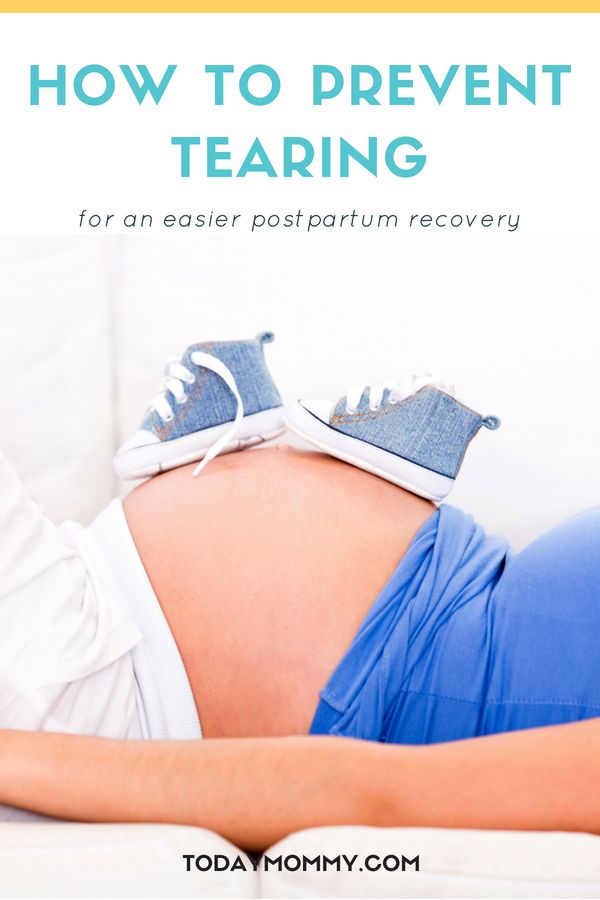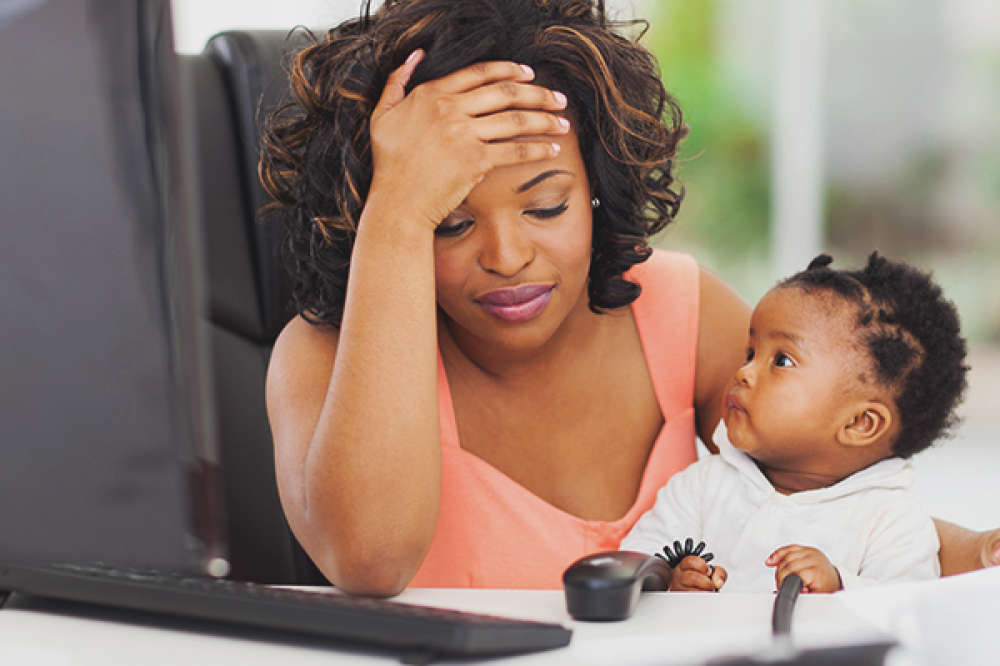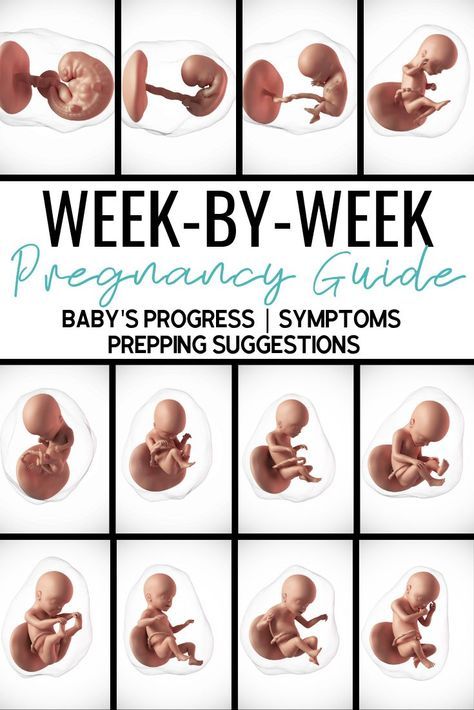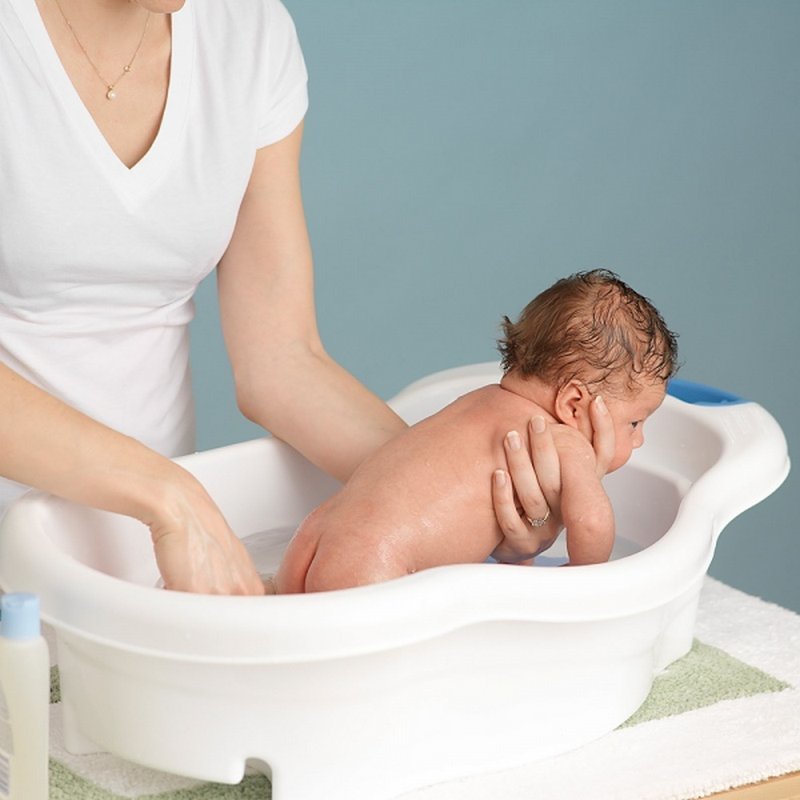Tightness in stomach while pregnant
When to see a doctor
Pregnancy is often an exciting time in a woman’s life, but it is also a time filled with strange new physical symptoms or experiences. Stomach-tightening is one such symptom that many women experience during pregnancy.
There are many reasons for the stomach or abdomen to tighten during pregnancy, and these may vary, depending on the trimester.
In this article, we look at the causes, as well as when to speak to a doctor.
Share on PinterestAs the uterus grows in the first trimester, the stomach may feel tight.There are many reasons why a woman may feel her stomach is tightening during the first trimester of pregnancy, including:
Stretching
During the first trimester, the uterus is growing and stretching rapidly to accommodate the growing fetus.
This can cause abdominal cramping or sharp, stabbing, or shooting pains along the side of the abdomen, as the ligaments and other tissues stretch.
Gas or constipation
Gas pain is a very common problem throughout pregnancy. It can cause cramping or shooting pain in the abdomen, and it can be very painful.
Constipation is also a common complaint in early pregnancy. The changing pregnancy hormones can slow down the gastrointestinal tract.
Also, the iron in some prenatal vitamins can harden stool and make it difficult to go to the bathroom. Both gas and constipation can sometimes make it feel as if the stomach is tightening.
Miscarriage
Rarely, tightening of the abdomen can signal a miscarriage, which is the loss of a pregnancy before 20 weeks.
However, a miscarriage is most common before the 12th week of pregnancy. Other signs of a miscarriage include:
- mild to severe back pain
- bright red or brown vaginal bleeding
- cramping
- vaginal discharge of tissue or clots
- decrease in the symptoms or signs of pregnancy, such as morning sickness or breast tenderness
The signs of a miscarriage vary between individuals and, in some situations, a woman may not have any signs at all. It is important for a woman to get regular prenatal care during early pregnancy so that her doctor can monitor the baby’s development.
It is important for a woman to get regular prenatal care during early pregnancy so that her doctor can monitor the baby’s development.
In early pregnancy, a woman should call the doctor’s office with any vaginal bleeding, especially if it is red and resembles a period.
Stretching, cramping, and stabbing pain along the sides of the uterus often continues into the second trimester, and is known as round ligament pain. The round ligaments are located on either side of the uterus and connect the uterus to the groin.
During pregnancy, the ligaments stretch as the uterus grows, which can cause the sharp pain. This pain commonly occurs with changes in position, such as sitting to standing or bending down.
Most women start to feel their uterus contract and periodically tighten some time during the second trimester, the point in their pregnancy between 14 to 28 weeks. These are known as Braxton-Hicks contractions, false labor, or practice contractions.
The purpose of Braxton-Hicks contractions is for the uterus to prepare for the hard work of labor and delivery. It is thought that they help to tone the muscle in the uterus and promote blood flow to the placenta.
It is thought that they help to tone the muscle in the uterus and promote blood flow to the placenta.
Braxton-Hicks contractions are normal and very common. They typically last for around 30 to 60 seconds but can be as long as 2 minutes. They are not as painful as regular contractions, but can still cause considerable pain and discomfort.
Some things may trigger or worsen Braxton-Hicks contractions:
- sex or orgasm
- dehydration
- a full bladder
- sharp kicking by the baby
Even though Braxton-Hicks contractions are common during pregnancy, it is important to mention them to the doctor at prenatal visits. The doctor can help determine whether they are Braxton-Hicks, or if they could be a sign of preterm labor.
It is important to call the doctor if:
- contractions get stronger or closer together
- contractions are not relieved by rest or drinking water
- there is fluid leaking from the vagina
- there is vaginal bleeding
A doctor should evaluate these symptoms to make sure that a woman is not experiencing complications or preterm labor.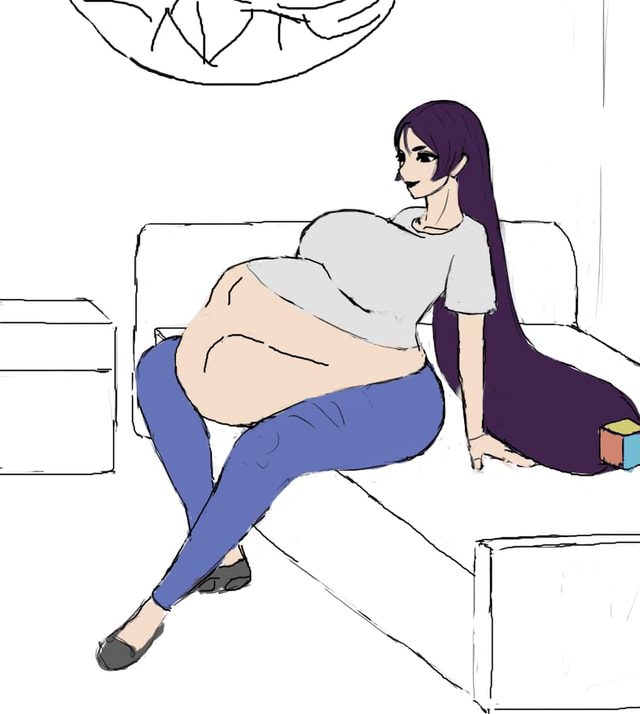
Share on PinterestDuring the third trimester, Braxton-Hicks contractions may increase in strength.
Stomach-tightening associated with Braxton-Hicks contractions increases in strength and frequency during the third trimester. These contractions are especially common during the last few weeks of pregnancy as the uterus prepares for birth.
However, it is still important to notice and keep track of them. If a woman has more than a few in an hour, she should speak to her doctor.
Things a person can do to relieve the pain and stretching feeling include:
- Drinking a glass of water: Dehydration is a common trigger for Braxton-Hicks contractions. Try having a big glass of water and lying down for a few minutes.
- Using the bathroom: Having a full bladder is associated with increased Braxton-Hicks contractions. Sometimes, just using the bathroom and emptying the bladder can stop the contractions.
- Changing positions: Sometimes body position can put pressure on the uterus, triggering Braxton-Hicks contractions.
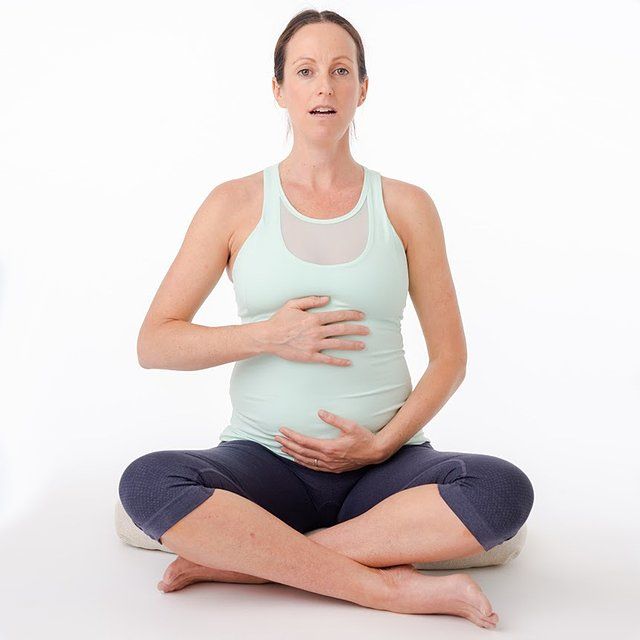 Try shifting positions or lying down.
Try shifting positions or lying down. - Taking a warm bath or shower: Sitting in a warm tub can relax tired or achy muscles, including the uterus.
- Drinking a cup of tea or warm milk: Warm milk or herbal tea can be both relaxing and hydrating.
It is important to call a doctor if home remedies do not relieve stomach tightening or if there are more than four contractions in an hour.
Many women have called their doctor or gone to the hospital if they experience Braxton-Hicks contractions, especially near the end of their pregnancy. As Braxton-Hicks contractions get stronger and more frequent, it often feels as if labor is beginning for real.
There are a couple of differences, however:
| Braxton-Hicks contractions | True labor |
| Irregular in intensity and frequency | Get closer together and progressively stronger |
| Uncomfortable | Painful |
| May be relieved with home measures, including drinking water or lying down | Home measures do not relieve them |
| No other signs of labor | May have other signs of labor |
Other signs of labor can include:
- back pain or cramping
- leaking of fluid from the vagina
- bloody vaginal discharge
As always, it is essential to contact the doctor or make a trip to the hospital with any questions or concerns.
Is It Labor or Something Else?
Stomach Tightening During Pregnancy: Is It Labor or Something Else?Medically reviewed by Debra Rose Wilson, Ph.D., MSN, R.N., IBCLC, AHN-BC, CHT — By Ashley Marcin on December 13, 2017
We include products we think are useful for our readers. If you buy through links on this page, we may earn a small commission. Here’s our process.
Overview
There are many aches, pains, and other sensations you may experience during your pregnancy, including stomach tightening.
Stomach tightening may start early in your first trimester as your uterus grows. As your pregnancy progresses, it may be a sign of a possible miscarriage in the early weeks, premature labor if you aren’t due yet, or impending labor. It can also be normal contractions that don’t progress to labor.
Here’s the lowdown on why you might experience stomach tightening at different stages of your pregnancy.
In the first trimester
Your stomach may feel tight in your first trimester as your uterus stretches and grows to accommodate your growing fetus. Other sensations you may experience include sharp, shooting pains on the sides of your abdomen as your muscles stretch and lengthen.
Other sensations you may experience include sharp, shooting pains on the sides of your abdomen as your muscles stretch and lengthen.
Is it a miscarriage?
Painful stomach tightening may be a sign of miscarriage. A miscarriage is a loss of pregnancy before week 20, though it’s most common before week 12.
You may have no symptoms with a miscarriage, or you may experience some or all of the following symptoms:
- tightness or cramping in your abdomen
- pain or cramping in your lower back
- spotting or bleeding
- seeing fluid or tissue pass from the vagina
Causes of miscarriage aren’t always clear. Some may be due to a blighted ovum, which means no embryo forms. Others may be due to:
- genetic issues with the fetus
- diabetes
- certain infections
- thyroid disease
- cervix issues
If you have painful stomach tightening along with other signs of miscarriage, call your doctor or midwife.
In the second trimester
As your body continues to adapt to pregnancy, you may experience stomach tightening and even sharp pains called round ligament pain.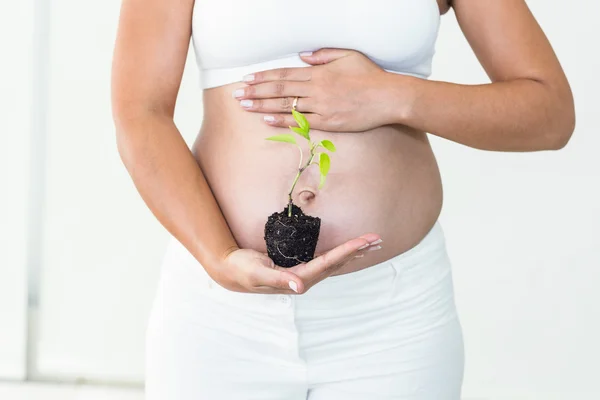 This type of discomfort is most common during the second trimester, and the pain may extend from your abdomen or hip area to your groin. Round ligament pain is considered totally normal.
This type of discomfort is most common during the second trimester, and the pain may extend from your abdomen or hip area to your groin. Round ligament pain is considered totally normal.
It’s also possible to experience Braxton-Hicks contractions as early as the fourth month of pregnancy. During these “practice contractions,” your stomach may feel very tight and uncomfortable. Some women get more of these contractions than others. Braxton-Hicks contractions aren’t as painful as regular labor contractions. They often occur with activity, like exercise or sex.
These contractions don’t generally affect the dilation of the cervix. They are irregularly, with no set pattern that you can time.
In some cases, you may develop what is called an irritable uterus. Contractions or stomach tightening with an irritable uterus feel similar to what you would expect to experience with Braxton-Hicks. With irritable uterus, though, you may actually get regular and frequent stomach tightening that doesn’t respond to rest or hydration. While this pattern may be alarming and a sign of preterm labor, women with irritable uterus don’t necessarily see a change in dilation.
While this pattern may be alarming and a sign of preterm labor, women with irritable uterus don’t necessarily see a change in dilation.
If you aren’t yet due, being dehydrated can also lead to increased contractions. If you’re feeling cramps that come and go, be sure to drink plenty of fluids. They often will diminish when you’re rehydrated. If the cramps and contractions are getting longer, stronger, or closer together, see your healthcare provider to prevent premature delivery.
If you’re having frequent contractions in your second trimester, it’s always best to contact your healthcare provider to rule out preterm labor or miscarriage. They can perform tests, like an ultrasound, to measure your cervix and evaluate other signs to see if you’re in labor.
In the third trimester
Stomach tightening in your third trimester may be a sign of labor. Labor contractions may start out mild and get stronger over time.
You can usually time these contractions by starting a stopwatch as one ends and stopping the watch as another one starts.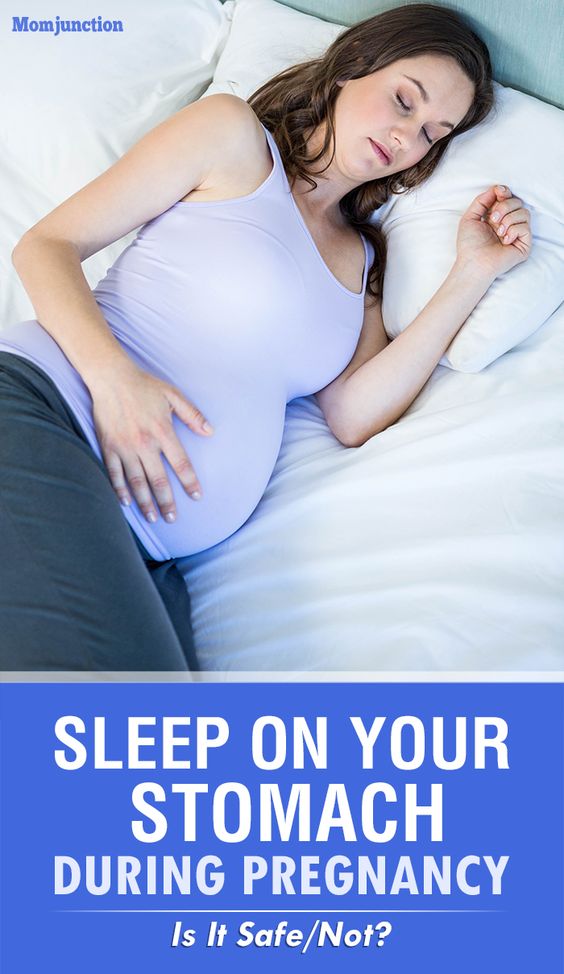 The time between them will generally be steady. At first, they will be spaced further apart, maybe every eight minutes or so. As labor progresses, they will get closer together.
The time between them will generally be steady. At first, they will be spaced further apart, maybe every eight minutes or so. As labor progresses, they will get closer together.
True labor contractions become more and more intense over time.
Braxton-Hicks contractions are more common in the third trimester of pregnancy. You may notice them in the final weeks of pregnancy. It’s also possible to notice them earlier in your third trimester.
Braxton-Hicks contractions are also referred to as “false labor” because many women mistake them for labor. If you’re getting lots of irregular contractions or stomach tightening, call your healthcare provider. If it’s after hours, you can also place a call to your local hospital and speak to a triage nurse. They can advise you on whether you should see a healthcare provider.
The rule of thumb is to call if you’ve had more than four to six contractions in an hour, no matter their pattern.
Braxton-Hicks vs. labor
Still confused about the difference between Braxton Hicks contractions and the real thing? Changing position, drinking a glass of water, or taking a gentle walk may make false labor contractions go away.
Other signs of labor include:
- lower back pain or cramping that doesn’t go away
- gushes or a trickle of clear liquid from the vagina, which is a sign of your water breaking
- red-tinged vaginal discharge, also known as “bloody show”
If a change in activity doesn’t relieve the stomach tightening, or the pain and frequency in your contractions gets worse, it may be time to visit the hospital.
When should I go to the hospital if I’m in labor?
You are probably in labor if your contractions are getting longer, stronger, and closer together. If this is your first baby, head to the hospital or call your midwife when your contractions come every three to five minutes, and last 45 to 60 seconds over an hour-long period of time. If you’re not a first-time mom, consider getting there when your contractions come every five to seven minutes, and last 45 to 60 seconds over an hour-long period. Head immediately in for care if your water breaks, regardless of whether you’re having contractions.
Treatment
If your stomach tightening is irregular and mild:
- drink a tall glass of water and stay hydrated
- move your body to see if a change in positions helps relax your stomach
- avoid getting up too quickly from bed or other positions
- consider getting a pregnancy massage to relax tired muscles
- use a warm water bottle or heat pad, or take a warm bath or shower
If these home measures don’t relieve your stomach tightness or you have other concerns, contact your doctor or midwife.
Go to the hospital immediately if you’re less than 36 weeks pregnant and have other signs of preterm labor, like:
- bleeding
- fluid leakage
- pressure in your pelvis or vagina
You should also contact your healthcare provider if you have more than four to six contractions in an hour, regardless of their timing. Hospitals often get calls from women who don’t know the different sensations of pregnancy, and it’s better to be safe than sorry if you suspect something might be happening with your pregnancy.
The takeaway
If you’re ever concerned about stomach tightening or contractions during your pregnancy, or any other symptoms, call your doctor. Your healthcare provider won’t mind if it’s a false alarm. It’s always better to be on the safe side.
While many cases of stomach tightening can be attributed to Braxton-Hicks contractions or growing pains, there’s always a slight chance it may be the real deal. Your healthcare provider can set your mind at ease if it’s a false alarm. If you’re in labor, they can help safely deliver your baby.
Last medically reviewed on December 13, 2017
- Parenthood
- Pregnancy
- Pregnancy Health
Medically reviewed by Debra Rose Wilson, Ph.D., MSN, R.N., IBCLC, AHN-BC, CHT — By Ashley Marcin on December 13, 2017
related stories
Why Vaginal Pressure During Pregnancy Is Totally Normal
Abdominal Pain During Pregnancy: Is It Gas Pain or Something Else?
Braxton-Hicks Contractions vs.
 Real Contractions
Real ContractionsSecond Trimester Pregnancy Complications
How to Deal with Butt Pain During Pregnancy
Read this next
Why Vaginal Pressure During Pregnancy Is Totally Normal
Medically reviewed by Nicole Galan, RN
Many pregnant women experience vaginal and/or pelvic pressure. Here's why it happens and how to find relief.
READ MORE
Abdominal Pain During Pregnancy: Is It Gas Pain or Something Else?
Medically reviewed by Debra Rose Wilson, Ph.D., MSN, R.N., IBCLC, AHN-BC, CHT
Gas pain is common during pregnancy. Sometimes, though, your stomach pain could be a sign of something more serious. Here's what to look out for.
READ MORE
Braxton-Hicks Contractions vs. Real Contractions
Medically reviewed by Debra Sullivan, Ph.
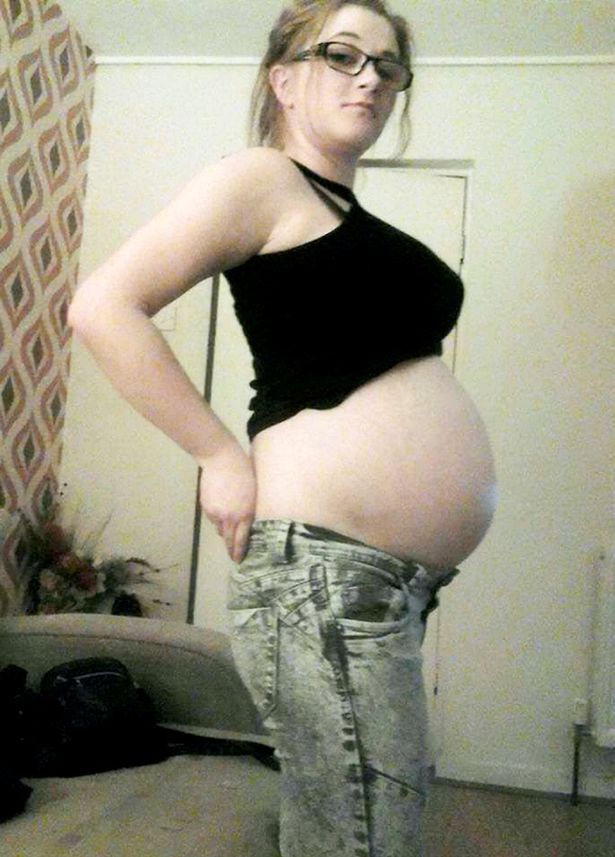 D., MSN, R.N., CNE, COI
D., MSN, R.N., CNE, COIBraxton-Hicks contractions can be confused with real contractions. Learn how to determine which you’re having.
READ MORE
Second Trimester Pregnancy Complications
Medically reviewed by Debra Rose Wilson, Ph.D., MSN, R.N., IBCLC, AHN-BC, CHT
By the second trimester of your pregnancy, you should be feeling better than you did in the first trimester. However, every pregnancy is different…
READ MORE
How to Deal with Butt Pain During Pregnancy
Medically reviewed by Janine Kelbach, RNC-OB
Many pregnant women report butt pain as a symptom during the third trimester. These treatment options will help you stay comfortable until delivery.
READ MORE
When Baby Comes Early: What Is Your Risk?
Medically reviewed by Tyler Walker, MD
A number of social factors affect a woman's risk for preterm labor.
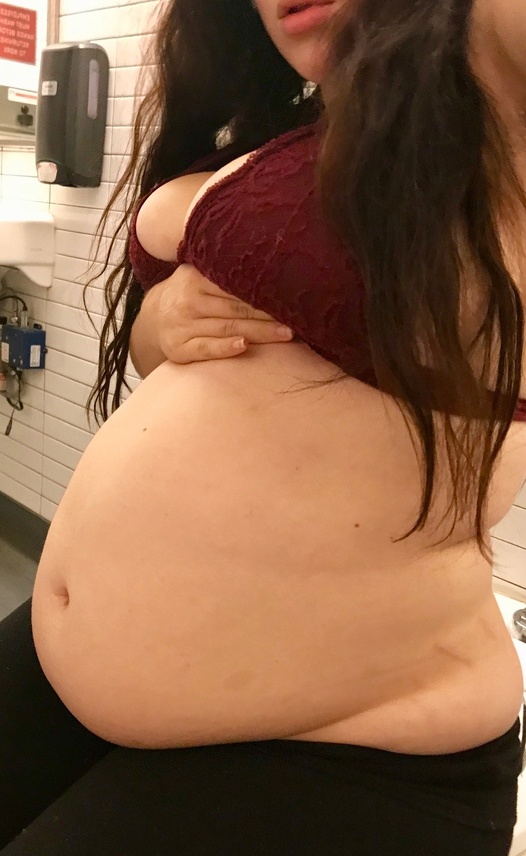 Discover what they are here.
Discover what they are here.READ MORE
Weird Early Pregnancy Symptoms No One Tells You About
Medically reviewed by Debra Rose Wilson, Ph.D., MSN, R.N., IBCLC, AHN-BC, CHT
You might be surprised by certain symptoms that the first trimester of pregnancy can bring. Get the facts on 10 unusual symptoms, such as tasting…
READ MORE
12 Essential Oils to Help Heal or Prevent Stretch Marks
Medically reviewed by Debra Rose Wilson, Ph.D., MSN, R.N., IBCLC, AHN-BC, CHT
Stretch marks usually fade on their own over time. But if you want to speed up the process, these essential oils may be the key to stretch mark-free…
READ MORE
What I’ve Learned from Counseling Couples Through Miscarriage
Most women tell me it doesn’t get better, but it does get easier.

READ MORE
The Acupressure Points for Inducing Labor
Medically reviewed by Debra Sullivan, Ph.D., MSN, R.N., CNE, COI
Are you pregnant and past your due date? Help induce labor naturally by pressing on these acupressure points along the body.
READ MORE
Why pulls the stomach in the early stages of pregnancy?
Why does the stomach pull in the early stages of pregnancy? This question often worries expectant mothers, and at times leads to panic. When is discomfort pathology, and when is it normal?
Pregnancy is a special time for a mother and her baby. After all, the connection between them is inextricable, and every negative influence or stress affects both of them.
Possible causes of pain
Every woman dreams of having an easy pregnancy and no cause for alarm. However, a very common complaint among pregnant women is pain in the lower abdomen of a pulling or aching nature.
Complaints are so common that it is necessary to clearly understand when pulling sensations during pregnancy are pathological and require immediate medical attention, and when they are completely physiological and require only general recommendations.
Of course, pain in the lower abdomen can appear at any stage of pregnancy, however, most often women notice their appearance in the early stages of pregnancy.
Painful sensations in the abdomen during pregnancy are very diverse both in subjective sensations and in their localization, in intensity of occurrence. Pain can appear both at rest and after any physical activity. Unpleasant sensations can manifest themselves in one place, or radiate to other areas.
Unpleasant sensations in the lower abdomen are rarely avoided during pregnancy. These sensations can occur not only in pathology. During pregnancy, the uterus increases in size, there is a tension in its ligaments and muscles. In addition, there is a displacement of the pelvic organs. All this leads to the appearance of pulling or aching sensations in the abdomen. All these phenomena are manifestations of physiological changes that occur to a woman during pregnancy.
All this leads to the appearance of pulling or aching sensations in the abdomen. All these phenomena are manifestations of physiological changes that occur to a woman during pregnancy.
Of course, this state of fear does not cause and does not require any intervention on the part of the doctor. However, pulling pains in the lower abdomen are not always a physiological process. It happens that this indicates that the pregnancy proceeds with pathology and requires medical adjustment.
That is why, if there are pulling or aching pains in the lower abdomen, it is necessary to contact an obstetrician-gynecologist in order to accurately determine the cause of the pain.
Never self-medicate. Remember that you are responsible not only for yourself, but also for the little man that you carry under your heart.
Abdominal pain during pregnancy may be:
- obstetric;
- "non-obstetric".
Pain associated with pregnancy may be developmental:
- physiological changes during pregnancy;
- threatened miscarriage;
- missed pregnancy;
- ectopic pregnancy.

Pain not associated with pregnancy may occur with:
- inflammatory processes;
- pathologies of the digestive system;
- surgical diseases;
- diseases of other organs or systems.
Pain in the lower abdomen during pregnancy as a variant of the norm
Not all pain in the lower abdomen during pregnancy is a manifestation of pathology. Sometimes they can occur during the normal course of pregnancy.
As a physiological process, pain in the lower abdomen can occur in the following situations:
- sign of pregnancy;
- displacement of the pelvic organs by the growing uterus;
- stretching of the ligaments and muscles associated with the growth of the uterus.
Abdominal pain is a sign of pregnancy
Finding out that you are pregnant is now not a big deal, because there are pregnancy tests. In addition, a delay in menstruation can serve as evidence of pregnancy.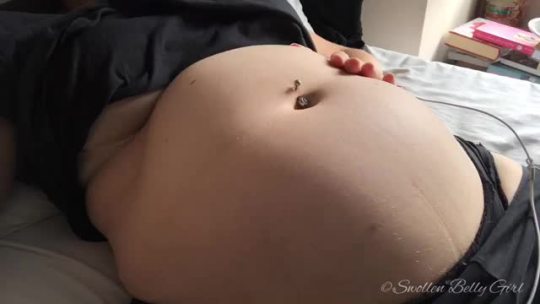
All this is good when menstruation is regular and delayed by at least 14 days. In this case, the pregnancy test may be positive. However, do not forget that not all tests are highly accurate, so it can show two cherished strips much later than we would like.
Therefore, it is necessary to pay close attention to the sensations of your body, because it signals the onset of pregnancy long before the manifestation of a delay in menstruation.
If you assume that pregnancy is possible, then listen carefully to your body: it can send you a signal in the form of pulling pains in the lower abdomen. At the same time, the pains will differ in their intensity: one woman will say that the pains are unbearable, the other will not notice them at all. Each woman is individual.
If each menstruation is preceded by unpleasant pain in the lower abdomen or lower back, you may not understand that once again they are associated with the onset of pregnancy.
Pain in the lower abdomen during pregnancy may be associated with the implantation process. To do this, you need to remember the process of fertilization of the egg by the sperm. After their fusion in the fallopian tubes, the fertilized egg enters the uterus under the action of the movement of cilia in the fallopian tubes. The uterine endometrium is a loose mass where a fertilized egg is implanted.
To do this, you need to remember the process of fertilization of the egg by the sperm. After their fusion in the fallopian tubes, the fertilized egg enters the uterus under the action of the movement of cilia in the fallopian tubes. The uterine endometrium is a loose mass where a fertilized egg is implanted.
The process of implantation is the insertion of a fertilized egg into the endometrium of the uterus. At this time, there is a violation of the integrity of the endometrium, which may be accompanied by unpleasant sensations in the lower abdomen. In addition, sometimes slight dark bloody discharge may appear from the genital tract, which can be perceived as the beginning of another menstruation.
Threatened miscarriage
A fairly common cause of pain in the lower abdomen is a threatened miscarriage. This condition is individual and does not depend on physical exertion or complete rest, but on the condition of the woman and her unborn child.
Among the reasons that may cause a miscarriage may be:
- severe physical exertion;
- sexual contact;
- malnutrition of the ovum;
- genetic disorders and other causes.

Of course, this is not evidence that a miscarriage will not occur with complete rest. Miscarriage can occur due to genetic abnormalities, and due to stress. No woman is immune from the threat of pregnancy loss.
That is why attention and sensitivity to the state of your body is so necessary, which will in every possible way send signals that the pregnancy is not going the way you want.
Threatened miscarriage is accompanied by:
- aching or pulling pains in the lower abdomen;
- aching or drawing pains in the small of the back or sacrum.
- bloody discharge from the genital tract.
If you have pain in the lower abdomen, you need to see a doctor, because a threatened miscarriage, if medical assistance is not provided, can turn into an abortion that has begun, the treatment of which is much more difficult, if not completely useless.
An ambulance should be called if:
- pain in the lower abdomen gets worse;
- pains begin to radiate to other areas;
- painful sensations do not go away for a long time;
- bloody discharge from the genital tract appeared.

Increased pain
If the pulling pains in the lower abdomen are weak, do not increase and do not radiate to other areas, then you can come to the antenatal clinic in the daytime on your own. This will not threaten serious complications of your condition.
If the pain becomes more intense, does not go away at rest, you should not self-medicate, take drugs without a doctor's prescription.
Do not put anything on the stomach. Both hot and cold application can contribute to the onset of a miscarriage. In addition, with the threat of termination of pregnancy, this manipulation will not remove the pain.
Localized pain
When a threatened miscarriage occurs, pain of a pulling or aching nature disturbs the pregnant woman in the lower abdomen.
If the pains have a clear localization in a certain place, most often on the right or left, then a mandatory consultation with a specialist is necessary, since an ectopic pregnancy or surgical pathology, such as appendicitis, may develop.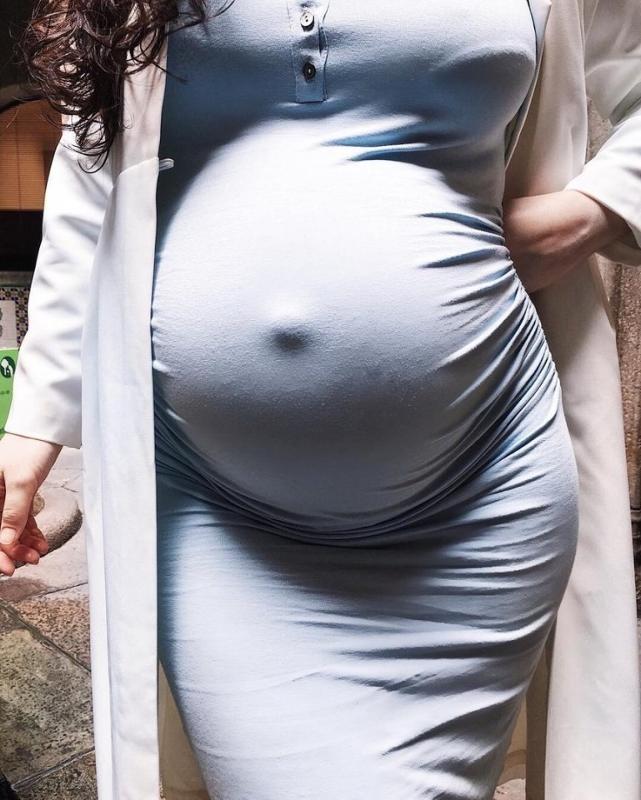
Bloody discharge from the genital tract
If bloody discharge from the genital tract has joined the pulling pain in the lower abdomen, urgent medical attention is needed. This phenomenon may indicate a miscarriage that has begun.
The discharge may be scanty, spotting or copious, dark or bright. In any case, you can not do without consulting an obstetrician-gynecologist.
There are situations when there is no pain, but there is bloody discharge from the genital tract. This case also requires specialist advice.
Any bloody discharge from the genital tract may indicate a miscarriage. Only timely treatment can contribute to the preservation and prolongation of pregnancy.
In some cases, the appearance of bloody discharge from the genital tract may be a manifestation of a miscarriage, which requires immediate medical attention.
Miscarriage
The fertilized egg does not always develop correctly. In some cases, there is a cessation of its division and death. Most often, missed pregnancy occurs due to any mutations. At the same time, the woman does not suspect that the pregnancy has stopped.
Most often, missed pregnancy occurs due to any mutations. At the same time, the woman does not suspect that the pregnancy has stopped.
However, the dead fetal egg begins to be rejected on its own. At the same time, there are pulling pains in the lower abdomen, which are soon joined by bloody discharge from the genital tract.
When a miscarriage is diagnosed, curettage of the uterine cavity may be indicated. Conservative management is also possible, but this can only be determined by a specialist after consultation.
Ectopic pregnancy
Ectopic pregnancy most often occurs as a tubal pregnancy, when the fertilized egg does not reach the uterus, and the implantation process occurs in the fallopian tube. At the same time, the development of the fetal egg can continue for a long time without any manifestations, up to 12 weeks of pregnancy. However, most often such a pregnancy is interrupted at 6 to 8 weeks.
The fertilized egg develops and grows, which causes pain in the right or left side of the lower abdomen. The pains are unilateral, are obsessive, tend to increase.
The pains are unilateral, are obsessive, tend to increase.
In addition to pain in the lower abdomen, bloody discharge from the genital tract appears, and the pain begins to radiate to the leg from the side of the pain. There may be unpleasant sensations of pressure on the rectum. Medical surgery is the only way to save a woman's life. Preservation of pregnancy is impossible.
"Non-obstetric" causes of pain in the lower abdomen
Inflammatory processes
Among the "non-obstetric" causes of pain in the lower abdomen, the most common are inflammatory processes of the pelvic organs. If earlier it was believed that there could be no inflammation in pregnant women, now it has been proven that a decrease in the immunity of a pregnant woman awakens all pathological processes in her body.
Pain in inflammatory processes of the pelvic organs differ in their intensity. At the same time, they occur in the lower abdomen and most often have a pulling or aching character.
Pathology of the digestive system
Very often, pulling pains in the lower abdomen can occur in a pregnant woman due to problems with the digestive tract. During pregnancy, there is a decrease in intestinal contractility. In addition, there are significant changes in the hormonal background of a woman. Therefore, very often pregnancy is accompanied by constipation and bloating. To normalize digestion, a change in diet is recommended and mild laxatives can be taken.
Surgical pathology
Of the surgical pathologies that may be accompanied by pulling pains in the lower abdomen during pregnancy, acute appendicitis is the most common.
In the early stages of pregnancy, it is obligatory to differentiate obstetric and gynecological diseases from appendicitis, since it has similar symptoms. There are pains in the lower abdomen, which most often occur in the navel or stomach, and then descend to the right iliac region. Nausea, vomiting, fever joins. The only treatment is surgery.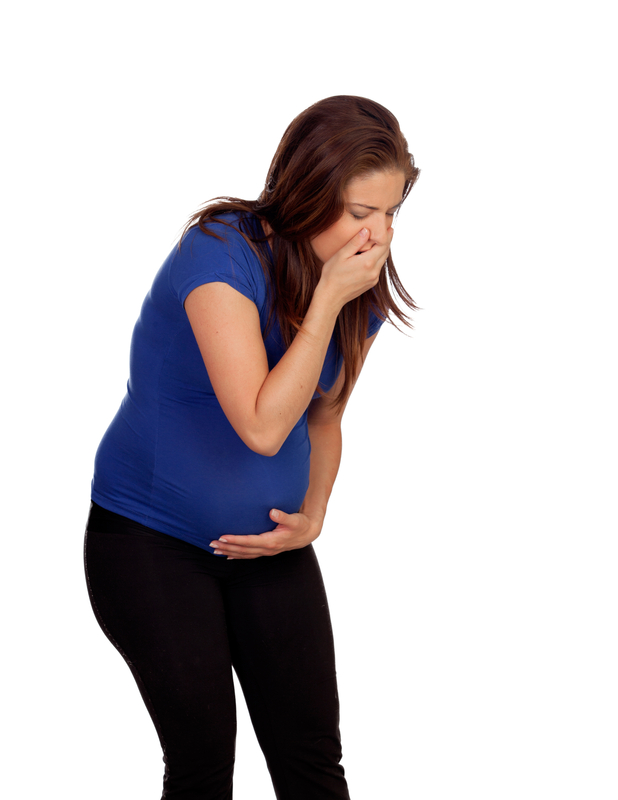 In this case, the pregnancy is preserved.
In this case, the pregnancy is preserved.
Diseases of other organs or systems
In addition to obstetric and surgical causes, which can cause pulling pains in the lower abdomen in early pregnancy, other body systems may also be involved in the pathological process. The most common lesion is the urinary tract.
Cystitis
Due to the anatomical features of a woman, cystitis can occur at any time and in any condition, so pregnant women are just as susceptible to it as non-pregnant women.
The bladder, located in the lower third of the abdomen, may give false symptoms of threatened miscarriage.
Cystitis, in addition to pulling or aching pains in the lower abdomen, is accompanied by pain during urination, pain at the end of the act of urination. In addition, with cystitis, the urine may be stained with blood, and it is difficult to distinguish this from bloody discharge during a miscarriage.
In any case, it is necessary to consult an obstetrician-gynecologist, pass a general urine test, and then consult a urologist and treat the infection.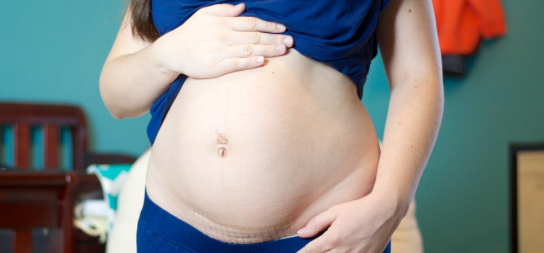 Any infection can adversely affect the condition of the fetus, so timely treatment is the key to the normal development of your child.
Any infection can adversely affect the condition of the fetus, so timely treatment is the key to the normal development of your child.
Make an appointment with a gynecologist
For more details, consult a qualified specialist at the Semeynaya clinic.
To clarify the prices for a gynecologist's appointment or other questions, follow the link below:
Heaviness in the lower abdomen - the causes of occurrence, what diseases it occurs in, diagnosis and treatment methods
IMPORTANT!
The information in this section should not be used for self-diagnosis or self-treatment. In case of pain or other exacerbation of the disease, only the attending physician should prescribe diagnostic tests. For diagnosis and proper treatment, you should contact your doctor.
Heaviness in the lower abdomen - the causes of occurrence, in what diseases it occurs, diagnosis and methods of treatment.
The feeling of heaviness, fullness, pulling pain in the lower abdomen are subjective sensations and require detailed diagnosis.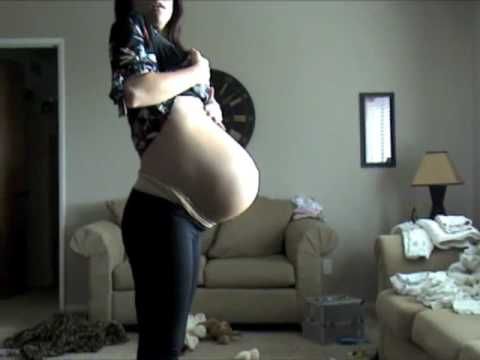 The abdomen is a concentration of vital organs that are located close to each other, which makes it difficult to determine the source of discomfort. The situation is aggravated by the fact that it is difficult for a person to describe the sensations experienced and indicate the exact localization of pain.
The abdomen is a concentration of vital organs that are located close to each other, which makes it difficult to determine the source of discomfort. The situation is aggravated by the fact that it is difficult for a person to describe the sensations experienced and indicate the exact localization of pain.
Varieties
Often, heaviness in the lower abdomen is accompanied by pain, a feeling of fullness, and sometimes discharge from the genitals or rectum.
The pain can be acute, paroxysmal, pulling, have different localization (right, left or center) and give to the lower back, scrotum, rectum or vagina.
Possible causes of heaviness in the lower abdomen
Heaviness and pulling sensations in the lower abdomen are often physiological in nature and occur at pregnancy . Discomfort develops due to an increase in the uterus, which puts pressure on neighboring organs - the bladder, intestines. In addition, the enlarged uterus stretches the ligaments and abdominal muscles, causing mild pain. However, the combination of severity with severe pain may be a symptom of an ectopic pregnancy or early placental abruption.
However, the combination of severity with severe pain may be a symptom of an ectopic pregnancy or early placental abruption.
Also common causes of heaviness in the lower abdomen include premenstrual syndrome and dysmenorrhea. Premenstrual syndrome occurs in more than half of women. There is no clear clinical picture for this condition. Often it is accompanied by heaviness and pain in the lower abdomen, mood swings, tearfulness, headache. These symptoms disappear after the onset of menstruation.
Premenstrual syndrome is based on hormonal changes.
With dysmenorrhea , the pain syndrome is more pronounced, and the cause may be a violation of blood circulation in the pelvic area. Vasospasm and venous congestion lead to irritation of the nerve endings, which is accompanied by pulling pain. Similar sensations are characteristic of perimenopausal period which occurs from the moment of the first menopausal symptoms and lasts one to two years after the last menstruation.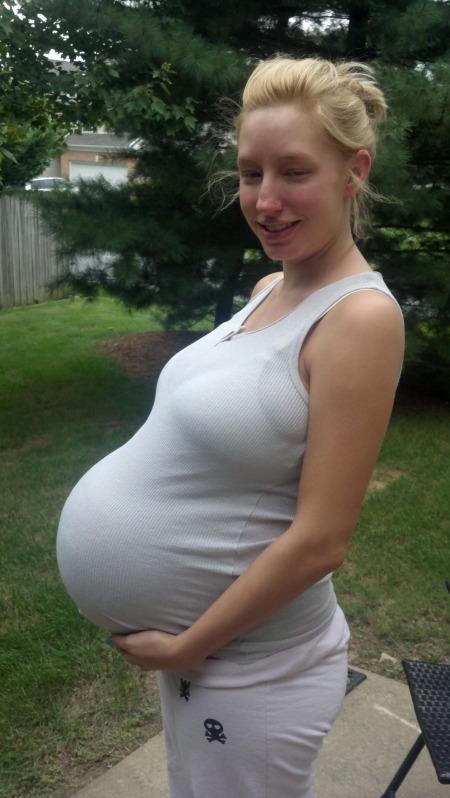 During this period, the level of estradiol in the blood fluctuates greatly, which can cause heaviness in the lower abdomen and back pain.
During this period, the level of estradiol in the blood fluctuates greatly, which can cause heaviness in the lower abdomen and back pain.
Gynecological diseases are almost always accompanied by pain and heaviness in the lower abdomen. Most often, these are inflammatory processes of the pelvic organs: adnexitis, endometritis, salpingitis, parametritis , etc. As a rule, these pathologies develop as a result of an ascending infection. The main pathogens are sexually transmitted microorganisms, or microorganisms that live in the vulva and anus. Additional factors contribute to the development of inflammation: frequent change of sexual partners, previous infectious processes, abortion, use of intrauterine devices, etc.
Inflammatory diseases of the pelvic organs are accompanied by pulling pain, radiating to the lower back and lower limbs, discharge (sometimes bloody) from the vagina, fever. Symptoms endometriosis , which often causes pulling pain, worse before the onset of menstruation. Heaviness in the lower abdomen sometimes serves as the only manifestation of ovarian cysts and uterine fibroids .
Heaviness in the lower abdomen sometimes serves as the only manifestation of ovarian cysts and uterine fibroids .
A common problem was pelvic pain which may be caused by urological, gynecological, proctological and vascular disorders.
Drawing and aching pains may appear with irritable bowel syndrome and be accompanied by diarrhea or constipation, bloating and flatulence. At night, the feeling of discomfort disappears.
In diseases of the genitourinary system, heaviness in the lower abdomen develops very often. When a stone blocks the ureter or urethra, the outflow of urine is disturbed and there are pulling pains in the groin. With complete obstruction, pain can acquire a sharp unbearable character. Violation of the outflow of urine can also be the result of other diseases: prostate hyperplasia or cancer, strictures of the urethra, etc. In these cases, pain appears in the perineum, in the sacrum or lower abdomen. Often they give to the groin and external genitalia.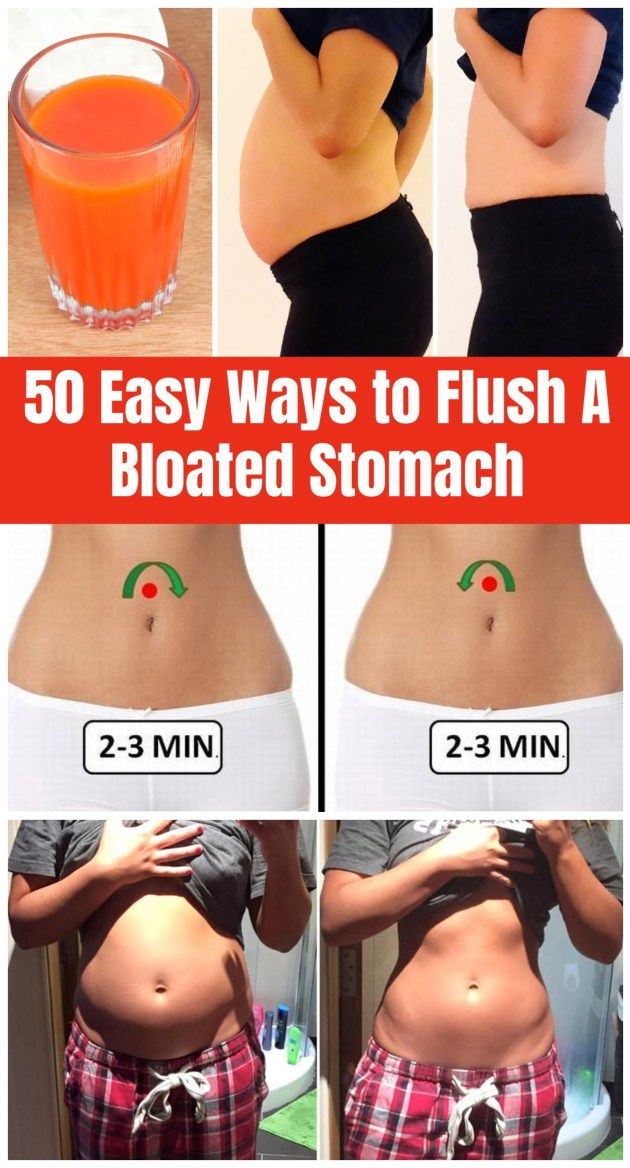
Often, a feeling of heaviness in the lower abdomen can be a manifestation of osteochondrosis of the lumbar spine. Aching pain, as a rule, occurs while walking or in a sitting position. The pain subsides at night.
Diagnostics and examination
Diagnosis of pathologies associated with pain and a feeling of heaviness in the lower abdomen is difficult.
Since the clinical manifestations of diseases do not correspond to their severity, delay in the treatment of the abdominal organs is fraught with serious consequences.
After questioning and examining the patient, the doctor gives a referral for a clinical blood test and a general urine test.
In some cases, an X-ray examination of the kidneys and urinary tract is necessary. In this case, excretory urography is often used.
Which doctors to contact
With the appearance of heaviness and pain in the lower abdomen, you should contact therapist for referrals for tests and examinations. The therapist can refer to urologist and gastroenterologist. Women are encouraged to make an appointment with gynecologist, since often the cause of heaviness in the lower abdomen lies in diseases of the reproductive organs. If an X-ray examination reveals a disease of the spine, the patient is referred to a rheumatologist, traumatologist or neurologist.
The therapist can refer to urologist and gastroenterologist. Women are encouraged to make an appointment with gynecologist, since often the cause of heaviness in the lower abdomen lies in diseases of the reproductive organs. If an X-ray examination reveals a disease of the spine, the patient is referred to a rheumatologist, traumatologist or neurologist.
Treatment
Heaviness in the lower abdomen can be a manifestation of various diseases, so the treatment is determined by the diagnosis.
What to do
Heaviness and pain in the lower abdomen can be explained by physiological causes, but can also serve as symptoms of serious pathologies that require rapid diagnosis and treatment. If you experience discomfort, do not postpone a visit to the doctor.
With heaviness and pain in the lower abdomen, heating cannot be used - this can lead to irreparable consequences. Pain relievers should only be taken with a doctor's prescription.
Persistent acute pain, which may be accompanied by discharge from the genital organs, nausea, vomiting, urinary incontinence, requires immediate medical attention.
Sources:
- Clinical guidelines "Normal pregnancy". Developed by: Russian Society of Obstetricians and Gynecologists. – 2020.
- Clinical guidelines "Amenorrhoea and oligomenorrhea". Developed by: Russian Society of Obstetricians and Gynecologists. – 2021.
- Clinical guidelines "Endometriosis". Developed by: Russian Society of Obstetricians and Gynecologists. – 2020.
- Clinical guidelines "Inflammatory diseases of the female pelvic organs". Developed by: Russian Society of Obstetricians and Gynecologists. – 2021.
IMPORTANT!
The information in this section should not be used for self-diagnosis or self-treatment. In case of pain or other exacerbation of the disease, only the attending physician should prescribe diagnostic tests.

